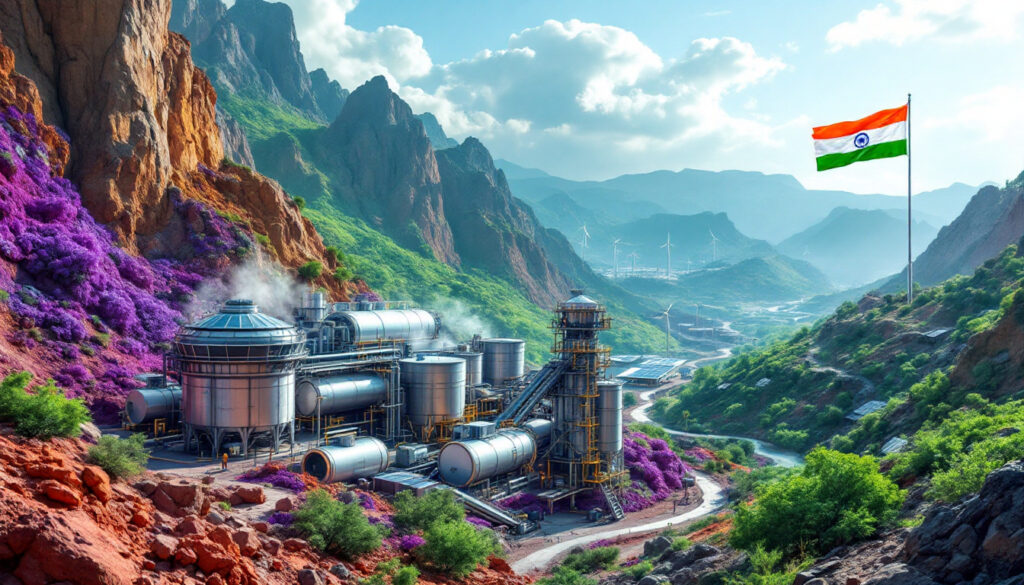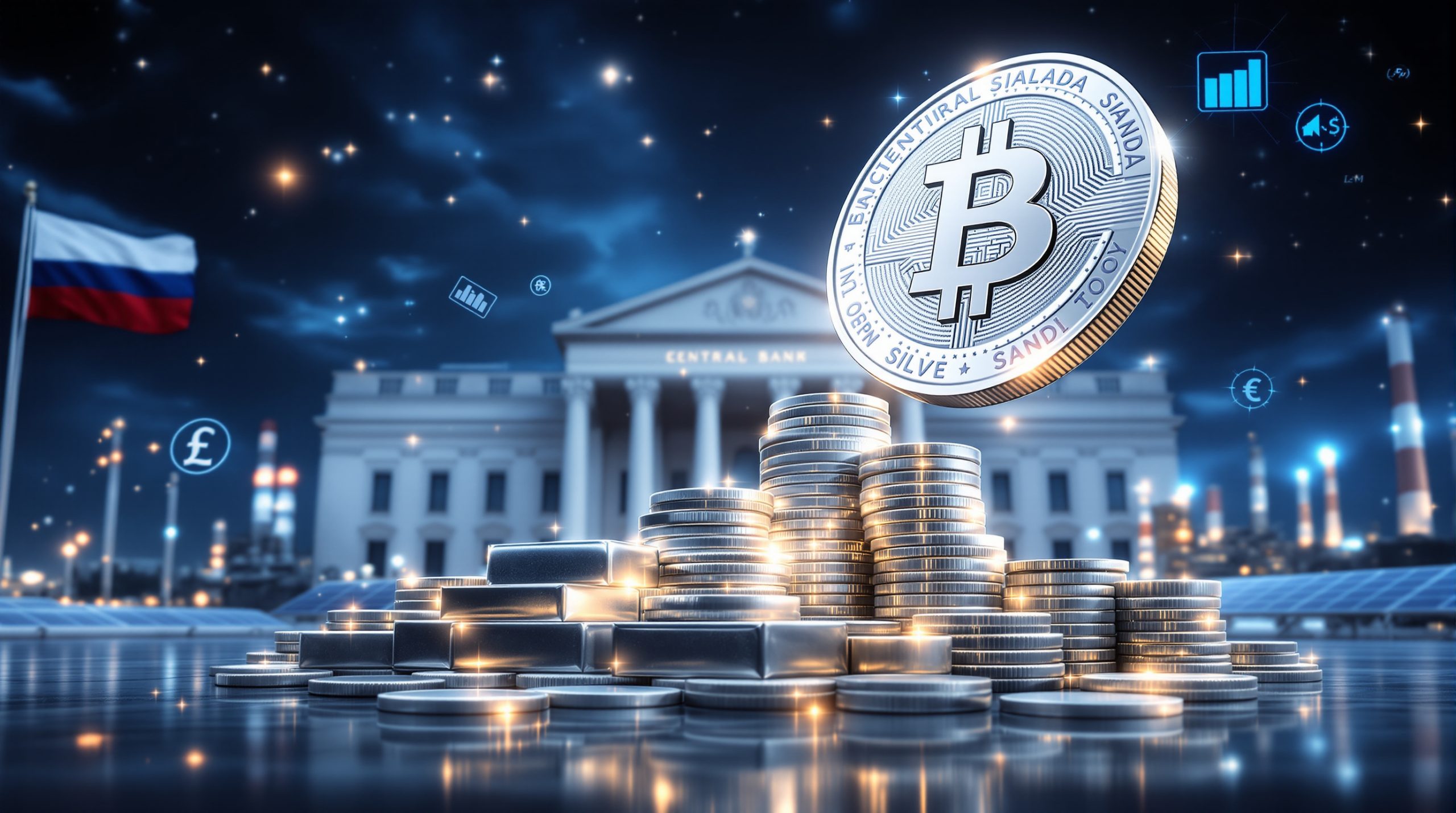India's National Critical Minerals Mission: Securing Green Energy Future
India has embarked on a strategic journey to secure its green energy future through the National Critical Minerals Mission. This initiative represents a pivotal shift in the country's approach to resource security, particularly as it accelerates its clean energy transition. The mission comes at a crucial time when global competition for minerals essential to renewable technologies is intensifying, with China controlling approximately 60% of rare earth production worldwide.
What is India's National Critical Minerals Mission?
Mission Overview and Strategic Importance
The National Critical Minerals Mission was launched by the Indian Government to ensure self-reliance in minerals essential for clean energy technologies, advanced manufacturing, and defense applications. With a substantial financial commitment of Rs163 billion ($1.9 billion), the mission represents one of India's most significant investments in mineral security to date.
The initiative is strategically aligned with India's ambitious climate goals, including reducing emissions intensity, increasing non-fossil power capacity to 500 GW by 2030, and achieving net-zero emissions by 2070. These targets necessitate a reliable supply of minerals like lithium, cobalt, nickel, and rare earth elements that form the backbone of green technologies.
The mission operates as part of a broader strategy to secure India's critical mineral supply chain from both domestic and international sources, reducing vulnerability to critical mineral shortages and geopolitical tensions that have destabilized mineral markets in recent years.
Key Objectives and Focus Areas
The mission's framework encompasses four primary pillars that collectively address the entire mineral value chain:
First, it prioritizes exploration and evaluation of domestic mineral reserves, with the Geological Survey of India (GSI) spearheading efforts to identify and quantify resources across the country.
Second, it facilitates the acquisition of critical mineral assets overseas through strategic partnerships and investments, recognizing that not all required minerals can be sourced domestically.
Third, the development of recycling infrastructure and technologies forms a crucial component, with Rs15 billion ($174 million) specifically earmarked for battery metals recycling initiatives.
Finally, the mission aims to strengthen value chains through technological advancement, regulatory reforms, and financial ecosystems that encourage private sector participation throughout the mineral supply chain.
How is India Exploring Critical Minerals Domestically?
Geological Survey of India's Exploration Projects
The GSI has embarked on an ambitious program comprising 1,200 exploration projects scheduled over the next six years. For the 2024-25 field season alone, 195 projects have been initiated, with 35 focused specifically in mineral-rich Rajasthan.
"The exploration intensity in India has historically been lower than global standards at merely 0.29 holes per square kilometer compared to Australia's 3.8 holes per square kilometer," notes a senior GSI official. "Our current initiatives aim to bridge this gap through advanced geophysical surveys and targeted drilling programs."
To expedite discoveries, the government is introducing a fast-track regulatory approval system designed to cut through bureaucratic hurdles that previously delayed exploration activities. This includes a new exploration license framework specifically engineered to encourage private sector participation, addressing a longstanding challenge in India's mining sector where private investment has lagged behind state-led initiatives.
Significant Discoveries and Reserves
Recent exploration efforts have yielded promising results. The Department of Atomic Energy has discovered approximately 111,845 tonnes of in-situ rare earth oxide (REO) reserves in Balotra, Rajasthan. This discovery is particularly significant as rare earth elements are crucial components in permanent magnets used in wind turbines and electric vehicle motors.
The mission focuses on 30 critical minerals identified by a specialized committee established by the Ministry of Mines in November 2022. These minerals were selected based on their economic importance, supply risk vulnerability, and ore deposit geology characteristics that determine their strategic value to India's industrial and defense sectors.
In a significant policy shift, 24 of these minerals now fall under the exclusive authority of the central government for auctioning mining leases and composite licenses. This centralization aims to streamline development and ensure strategic coordination across states, preventing fragmented approaches that previously hindered systematic development.
What International Partnerships is India Pursuing?
Strategic Agreements for Mineral Acquisition
Recognizing that domestic sources alone cannot meet its critical mineral requirements, India has proactively established international partnerships. The country has secured agreements for lithium exploration covering 15,703 hectares in Argentina's lithium triangle—a region containing approximately 54% of the world's lithium resources.
These agreements target the mineral-rich Salar de Olaroz basin, where lithium concentrations in brine deposits reach commercially viable levels of 500-700 mg/L, significantly higher than most global deposits.
Simultaneously, India has signed memorandums of understanding with Australia for strategic investments in lithium and cobalt projects. Australia, as the world's largest lithium producer with approximately 52,000 tonnes of annual production, represents a reliable partner in India's mineral security strategy.
These international arrangements focus on establishing reliable global supply chains for minerals with limited domestic availability, including lithium, cobalt, and platinum group metals, which are crucial for battery technologies and fuel cells.
Centre of Excellence on Critical Minerals
Central to coordinating these international efforts is the newly established Centre of Excellence on Critical Minerals (CECM). This institution serves as the intellectual hub of India's mineral strategy, tasked with guiding policy development and regularly updating the critical minerals list to reflect evolving technological and market dynamics.
The CECM facilitates knowledge-sharing with international partners, developing expertise through collaborative research programs and technical exchanges with countries like Australia, Japan, and the United States that have advanced critical minerals strategies.
This center plays a vital role in coordinating domestic and international mineral security efforts, ensuring policy coherence and strategic alignment across government departments and with international partners.
How is India Funding the Critical Minerals Mission?
Financial Commitments and Allocations
The government has made a substantial financial commitment of Rs163 billion ($1.9 billion) to the critical minerals sector, signaling the strategic importance of these resources to India's industrial future.
Of this total, Rs15 billion ($174 million) has been specifically earmarked for critical minerals recycling initiatives, recognizing the significant potential of urban mining to supplement primary sourcing.
Financial incentives for private sector participation may include capital expenditure subsidies or production-linked benefits over 4-5 years. These incentives are strategically designed to address specific gaps in the value chain, from exploration to processing and recycling.
"The financial structure follows a risk-reward approach," explains an official from the Ministry of Finance. "Higher incentives are provided for earlier-stage activities like exploration where risks are greater, while processing and manufacturing receive support based on production outcomes."
Customs and Tax Incentives
To promote the recycling industry, the government plans to remove customs duties on key mineral scrap in February 2025. This policy adjustment aims to increase the cost-competitiveness of recycled materials compared to primary mining products.
Additional financial incentives include tax holidays for exploration activities, reduced goods and services tax (GST) for processing equipment, and preferential access to capital for projects developing strategic minerals like lithium, cobalt, and rare earths.
These fiscal measures collectively aim to create a favorable investment environment for private sector participation across the critical minerals value chain, addressing historical underinvestment in this sector.
What Role Does Recycling Play in India's Critical Minerals Strategy?
Recycling Targets and Infrastructure
Recycling forms a cornerstone of India's critical minerals strategy, with ambitious targets to scale lithium-ion battery recycling to 75,000 tonnes annually. This target reflects recognition that India generates approximately 3 million tonnes of e-waste annually, containing valuable quantities of critical minerals.
The government has launched a specialized incentive scheme to promote the recycling of critical minerals from scrap and waste, focusing particularly on end-of-life electronics, batteries, and industrial catalysts.
This initiative places significant emphasis on creating a circular economy for critical minerals, designed to reduce import dependency while simultaneously addressing growing electronic waste challenges.
"Battery recycling can recover up to 95% of cobalt, 90% of nickel, and 80% of lithium from spent batteries," notes Dr. Ravi Kumar, a materials scientist at the Indian Institute of Technology. "These recovery rates make recycling not just environmentally sound but economically viable."
Economic and Environmental Benefits
The recycling component delivers multiple benefits beyond securing mineral supplies. It significantly reduces reliance on imported raw materials, with each tonne of recycled lithium-ion batteries potentially saving $1,000-1,500 in import costs.
The environmental impact is substantially lower compared to primary mining, with recycling typically generating 60-70% fewer carbon emissions than extracting virgin materials.
Additionally, the development of a domestic recycling industry creates skilled employment opportunities throughout the collection, processing, and material recovery chain, contributing to India's broader economic goals.
How Will This Impact India's Green Energy Transition?
Supporting Renewable Energy Growth
The critical minerals mission directly supports India's renewable energy ambitions by securing minerals essential for solar panels, wind turbines, and energy storage systems. For instance, rare earth elements like neodymium and dysprosium are crucial for permanent magnets in wind turbines, with each megawatt of wind capacity requiring approximately 200 kg of rare earth materials.
The initiative enables domestic manufacturing of clean energy technologies by ensuring a stable supply of input materials, reducing dependency on imported components that have historically limited domestic manufacturing potential.
By securing diverse supply chains, the mission reduces India's vulnerability to supply disruptions and price volatility that have previously impacted renewable energy deployment timelines and costs.
Contribution to Climate Goals
The mission substantially supports India's target of 500 GW of non-fossil energy capacity by 2030, which requires approximately 25,000 tonnes of lithium, 42,000 tonnes of cobalt, and 60,000 tonnes of nickel for associated energy storage systems.
It facilitates the transition to electric vehicles by securing battery minerals, supporting India's ambitious goal of 30% EV penetration by 2030, which would require approximately 50 GWh of battery production annually.
These efforts collectively contribute to creating a sustainable supply chain essential for India's net-zero emissions target by 2070, ensuring that decarbonization efforts aren't hindered by mineral supply constraints.
FAQ: India's Critical Minerals Mission
What are critical minerals and why are they important?
Critical minerals are raw materials essential for clean energy technologies, defense applications, and high-tech industries that face supply risks. They include lithium, cobalt, rare earth elements, and others vital for batteries, magnets, solar panels, and wind turbines.
These minerals are considered "critical" because they face significant supply risks due to geological scarcity, geopolitical factors, or processing challenges. For instance, 70% of global cobalt comes from the Democratic Republic of Congo, creating vulnerability to political instability in a single region.
The average smartphone contains more than 30 different minerals, including several categorized as critical, demonstrating their importance to modern technology and everyday life.
How will India's critical minerals mission benefit the economy?
The mission is expected to create approximately 800,000 direct and indirect jobs across the mining, processing, and recycling sectors over the next decade, based on industry employment multipliers.
It will reduce import dependency, potentially saving $3-4 billion annually on mineral imports by 2030 through a combination of domestic production and recycling.
The initiative supports domestic manufacturing of high-value products in electronics, renewable energy, and defense sectors, with potential to increase India's manufacturing contribution to GDP from 17% to 25% by 2030.
Additionally, it improves India's position in global clean technology supply chains, creating export opportunities in processed materials and components rather than merely raw ore exports.
What challenges does India face in developing its critical minerals sector?
Key challenges include limited known domestic reserves of certain minerals, particularly lithium and cobalt, necessitating international partnerships for supply security.
Environmental concerns related to mining present significant hurdles, particularly water usage, land disturbance, and waste management requirements that must be addressed through sustainable mining practices.
Technological gaps in processing and recycling, especially for rare earth elements which require sophisticated separation techniques not widely available in India, need substantial investment in research and development.
Competition from established global players in mineral-rich regions represents another obstacle, with Chinese companies having secured advantageous positions in many mineral-rich countries through early investments and strategic partnerships.
Want to Invest in the Next Major Mineral Discovery?
Discovery Alert's proprietary Discovery IQ model delivers real-time alerts on significant ASX mineral discoveries, helping investors capitalise on opportunities like those mentioned in India's minerals strategy. Understand why major mineral discoveries can lead to substantial returns by exploring Discovery Alert's dedicated discoveries page.




